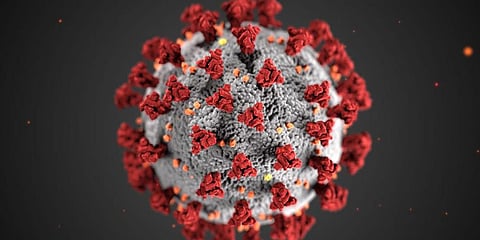

WASHINGTON: It is more probable that COVID-19 spread when an infected animal passed the SARS-CoV-2 virus to a human at a live animal market in Wuhan, China rather than the disease originating from a laboratory accident, according to a team of global scientists.
In a critical review published as pre-proof in the journal Cell, 21 scientific experts from across the world presented evidence about what may have started the pandemic.
"The discussion over the origins of the pandemic have become politicised and heated, and we felt the time was right to take a critical look at all of the available evidence," said Stephen Goldstein, an author on the paper and evolutionary virologist at University of Utah Health, US.
"Preventing future pandemics requires the political will to cut off the routes by which these viruses enter the human population. Focusing in the wrong direction will preclude those efforts from occurring," Goldstein said.
The authors noted that maps pinpointing geographic locations of the first wave of COVID-19 cases in December 2019, show they initially emerged close to the site of the Huanan Seafood Wholesale Market in Wuhan, as well as other markets reported to have live animal trading.
They said that in the weeks following, cases radiated outward geographically, adding those cases were followed by excessive deaths in January 2020, a second marker of how the virus spread through the population.
Similarly, those deaths were initially localised to near the animal markets, the authors noted.
"It tells us where the epidemic began and where intense transmission began," Goldstein explained.
"This suggests that the epidemic began in markets in this district: the Huanan and possibly other markets as well," he said.
The Wuhan Institute of Virology, often cited as the source of a lab leak, is also marked on the map, but is a distance away from the live animal markets.
The scientists said none of the very first documented cases -- or excessive deaths within the first week of emerging -- were located near the institute.
None of the first documented cases were reported as being related to staff at the laboratory, they added.
There is no evidence that researchers at the institute worked with SARS-CoV-2 nor a closely related virus, according to the paper.
The authors, including Edward Holmes from The University of Sydney, Australia, and Andrew Rambaut from the University of Edinburgh, UK, argue that COVID-19 is not the first coronavirus-based infectious disease associated with animal markets.
The 2002 and 2003 outbreaks of SARS, the disease caused by the SARS-CoV virus, were associated with markets in China that sold live animals, they noted.
In addition to SARS-CoV and SARS-CoV-2, five other coronaviruses have crossed into humans from animals in the past 20 years.
Combined with the observation that the majority of viruses in humans, both coronaviruses and other virus types, came from infected animals, the authors noted it would not be unexpected for SARS-CoV-2 to have entered the human population in the same way.
A recurring argument for the lab leak theory is that the virus, SARS-CoV-2, carries a specific short genetic code that is sometimes engineered into laboratory products, called a furin cleavage site.
To investigate, researchers have previously analysed genetic sequences from multiple coronaviruses and found the code in question to be commonplace among them.
The authors further determined that the specific code in SARS-CoV-2 is imperfect and therefore would not perform its function well.
"There is no logical reason why an engineered virus would utilise such a suboptimal furin cleavage site, which would entail such an unusual and needlessly complex feat of genetic engineering," the authors wrote.
Examination of the virus' sequence has not turned up other potential signs of deliberate manipulation, they added.
While a substantial body of scientific evidence supports SARS-CoV-2 originating from wildlife, those animals have not been found, the researchers noted.
"We can't rule out the possibility of a lab accident. It can't be dismissed entirely, but it is highly unlikely. There's no evidence for it right now," Goldstein added.